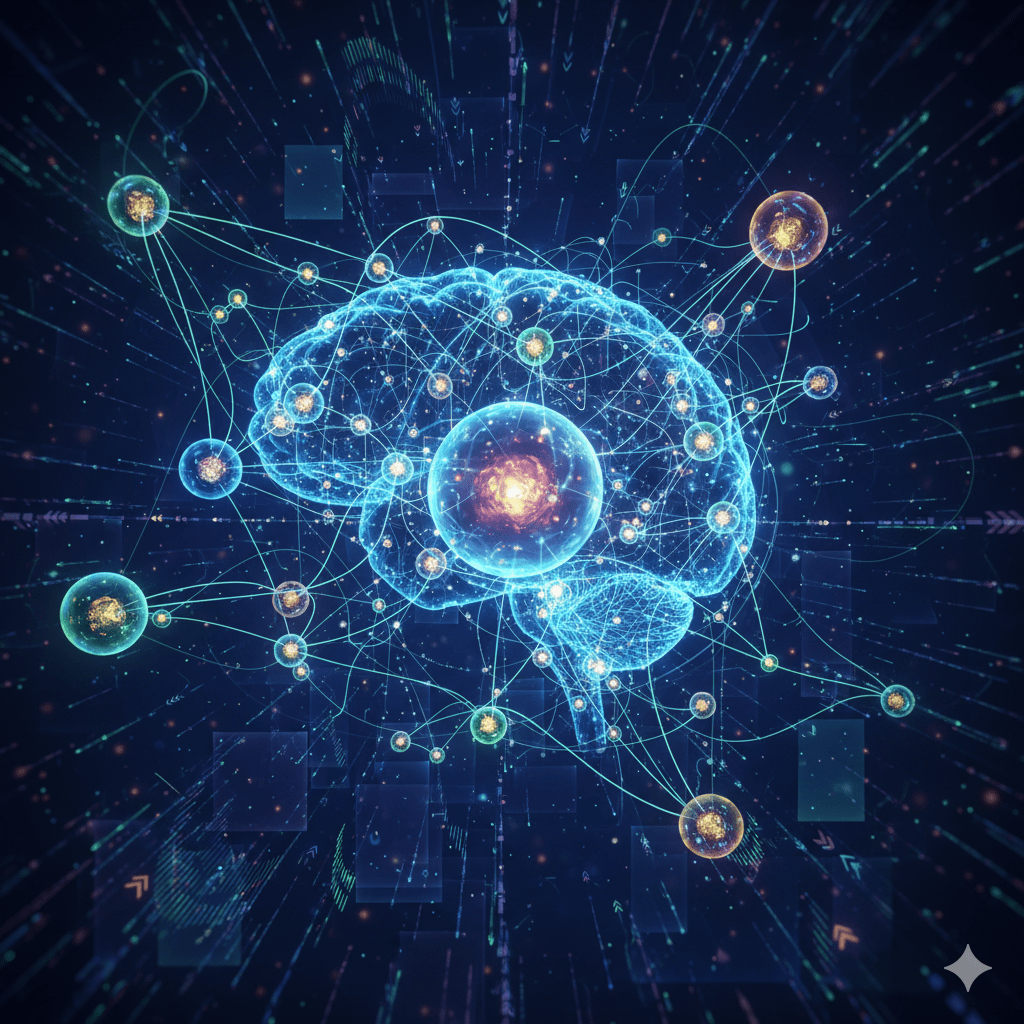
What are Neural Networks? Complete Guide
Artificial neural networks are one of the fundamental pillars of modern artificial intelligence. From image recognition to virtual assistants, these powerful tools are revolutionizing the way machines learn and process information.
What is a Neural Network?
An artificial neural network is a computational system inspired by the functioning of the human brain. It is composed of interconnected processing units called artificial neurons or nodes, which work together to process information and learn complex patterns.
Biological Inspiration
Just like neurons in our brain:
- Receive signals from multiple sources (inputs)
- Process information through mathematical functions
- Transmit results to other neurons (outputs)
- Learn by adjusting connections between neurons
Basic Components of a Neural Network
1. Artificial Neuron (Perceptron)
The basic unit that:
- Receives inputs with different weights
- Sums weighted inputs
- Applies an activation function
- Produces an output
2. Layers
- Input layer: Receives initial data
- Hidden layers: Process and transform information
- Output layer: Produces the final result
3. Weights and Biases
- Weights: Determine the importance of each connection
- Biases: Allow adjustment of activation threshold
- Adjusted during training to improve performance
4. Activation Function
Determines whether a neuron should activate:
- ReLU: Most common function in hidden layers
- Sigmoid: For probabilities between 0 and 1
- Tanh: For values between -1 and 1
- Softmax: For multi-class classification
Types of Neural Networks
Basic Neural Networks
- Simple Perceptron: Single neuron for linear problems
- Multi-Layer Perceptron (MLP): Multiple layers for complex problems
- Feedforward Networks: Information flows in one direction
Specialized Networks
Convolutional Networks (CNN)
- Specialized in images
- Detect local features (edges, shapes, textures)
- Applications: Facial recognition, medical diagnosis, autonomous vehicles
Recurrent Networks (RNN/LSTM)
- Specialized in sequences
- Have memory to remember previous information
- Applications: Language processing, translation, time series prediction
Generative Networks (GAN)
- Generate new content
- Two competing networks: generator vs discriminator
- Applications: Image creation, digital art, deepfakes
How Neural Networks Learn
1. Training Process
Input data → Neural Network → Prediction → Compare with actual result → Adjust weights
2. Forward Propagation (Forward Pass)
- Data flows from input to output
- Each neuron processes and transmits information
- A prediction is generated
3. Backpropagation
- Error is calculated between prediction and actual result
- Error propagates backward through the network
- Weights are adjusted to reduce error
4. Optimization
- Gradient descent: Algorithm to minimize error
- Epochs: Complete iterations over all data
- Batches: Subsets of data processed together
Practical Applications
Image Recognition
✅ Medical diagnosis: Cancer detection in X-rays ✅ Security: Facial recognition at airports ✅ Agriculture: Pest identification in crops ✅ Quality: Automatic control in production lines
Natural Language Processing
✅ Chatbots: Intelligent virtual assistants ✅ Translation: Google Translate, DeepL ✅ Sentiment analysis: Social media monitoring ✅ Text generation: GPT, automated writing
Prediction and Analysis
✅ Finance: Stock price prediction ✅ Weather: More accurate weather forecasts ✅ Marketing: Personalized recommendations ✅ Logistics: Delivery route optimization
Advantages and Limitations
Advantages
🎯 Learning capability: Adapt to new data 🎯 Complex patterns: Detect non-linear relationships 🎯 Versatility: Applicable to multiple domains 🎯 Automation: Reduce need for manual programming
Limitations
⚠️ Black box: Difficult to interpret decisions ⚠️ Data requirements: Need large volumes of information ⚠️ Computational power: Require significant resources ⚠️ Overfitting: May memorize instead of learning
Tools and Frameworks
For Beginners
- Scratch for Machine Learning: Visual concepts
- Orange: Graphical interface without programming
- Teachable Machine: Google’s tool
For Developers
- TensorFlow: Google’s framework, very popular
- PyTorch: Preferred in research, easy to use
- Keras: High-level API, ideal for beginners
- Scikit-learn: For simple neural networks
Online Platforms
- Google Colab: Free notebooks with GPU
- Kaggle: Competitions and datasets
- Jupyter Notebooks: Interactive development environment
How to Get Started
1. Mathematical Foundations
- Linear algebra: Matrices and vectors
- Calculus: Derivatives and gradients
- Statistics: Probability and distributions
2. Programming
- Python: Most popular language for AI
- NumPy: Numerical computing
- Pandas: Data manipulation
- Matplotlib: Visualization
3. Practical Learning
- Simple projects: Basic image classification
- Public datasets: MNIST, CIFAR-10, ImageNet
- Online tutorials: Coursera, edX, YouTube
- Communities: Stack Overflow, Reddit, GitHub
The Future of Neural Networks
Emerging Trends
🚀 Transformers: Revolutionary architecture (GPT, BERT) 🚀 Efficient neural networks: Less resources, better performance 🚀 Federated learning: Distributed training preserving privacy 🚀 Neuromorphic computing: Specialized brain-inspired hardware
Current Challenges
🔍 Explainability: Making decisions more interpretable 🔍 Energy efficiency: Reducing computational consumption 🔍 Robustness: Greater resistance to adversarial attacks 🔍 Generalization: Better transfer between domains
Conclusion
Neural networks have transformed the artificial intelligence landscape, enabling achievements that previously seemed impossible. From recognizing faces to generating art, these powerful tools continue to expand the limits of what machines can do.
Understanding neural networks is essential in today’s digital world. You don’t need to become a technical expert, but understanding their basic principles will help you better leverage AI technologies that are already part of our daily lives.
The future promises even more powerful and efficient neural networks. The machine learning revolution is just beginning, and neural networks will continue to be the engine driving the next advances in artificial intelligence.
Neural networks are not magic, they are mathematics. But when mathematics can learn, recognize, create and predict, the result can seem truly magical.